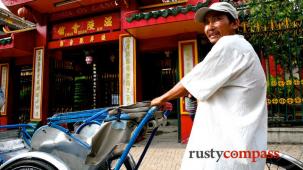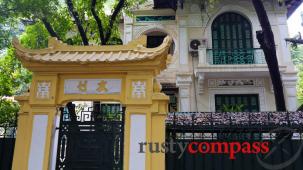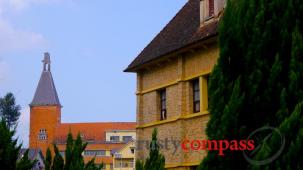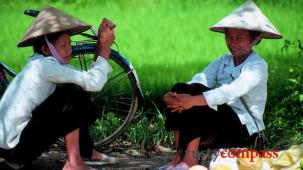In the 1920s and 30s while many of Vietnam's intellectuals were devoting their energies to achieving independence from the French, a curious religious sect was beginning to take root in the country's south - the Cao Dai. With a pantheon of saints that includes Victor Hugo and Sun Yat Sen, Cao Dai may seem eccentric but its message of fraternal love and its recognition of the great faiths gives it a distinctly benign outlook in an era of religious intolerance. Cao Dai draws on the main eastern and western religious traditions and its followers are permitted to pursue other accepted faiths.
Cao Dai was founded by a Vietnamese civil servant in the French colonial administration, Ngo Van Chieu. Chieu was visited by a spirit “Cao Dai” or “high place” revealing the tenets of the faith. Cao Dai professes to represent a third religious epoch building on the diverse traditions of Lao tzu, Sakyamuni, Confucius, Christendom and Islam. The divine eye seen in this image symbolises God in Cao Dai and represents “universal conscience and individual conscience.”
Graham Greene described the Cao Dai Holy See at Tay Ninh as a “Walt Disney fantasia of the East, dragons and snakes in technicolour.” In Greene’s 1950s novel The Quiet American, Fowler makes a trip to the temple. On his way back his vehicle is attacked by Viet Minh whose forces were active across the countryside between Saigon and Tay Ninh. Their successors, the Viet Cong were also very active in this area which meant that the temple was located in hotly contested territory during the war years.
Services are held at the temple each six hours from midnight. Visitors receive a warm welcome and are able to watch and photograph the service from a balcony above. The midday service is popular with travellers.
Midday service, Cao Dai Temple
The Cao Dai service consists of prayers and chants performed by this traditional band.
According to the pamphlet distributed to visitors, Cao Dai requires its followers to observe five “interdictions” - not to kill living beings - not to covet, to avoid materialism - not to practice high living - not to be tempted by luxury, which attracts cruel Kharma, - not to sin by word. They must also observe obedience, modesty, honesty and respect.
The Cao Dai are non violent and vegetarian although they were active anti communists during the Vietnam War and maintained a large militia. After 1975, they paid a price for their anti communism and suffered persecution and the loss of land. In recent decades however, Cao Dai is tolerated and the church is said to have upwards of three million adherents across southern Vietnam. The distinctive all seeing eye can be found on temples from the Mekong Delta in the south as far north as Hue.
The three revered saints, Chinese independence leader Sun Yat Sen, author Victor Hugo and Vietnamese poet Nguyen Binh Khiem sign off on key tenets of the religion - God and Humanity, Love and Justice in French and Chinese.
Two Cao Dai elders before the service. Their hats bear the all seeing eye.
Having witnessed decades of war and repression, these men must welcome the relative acceptance the church now enjoys.






















